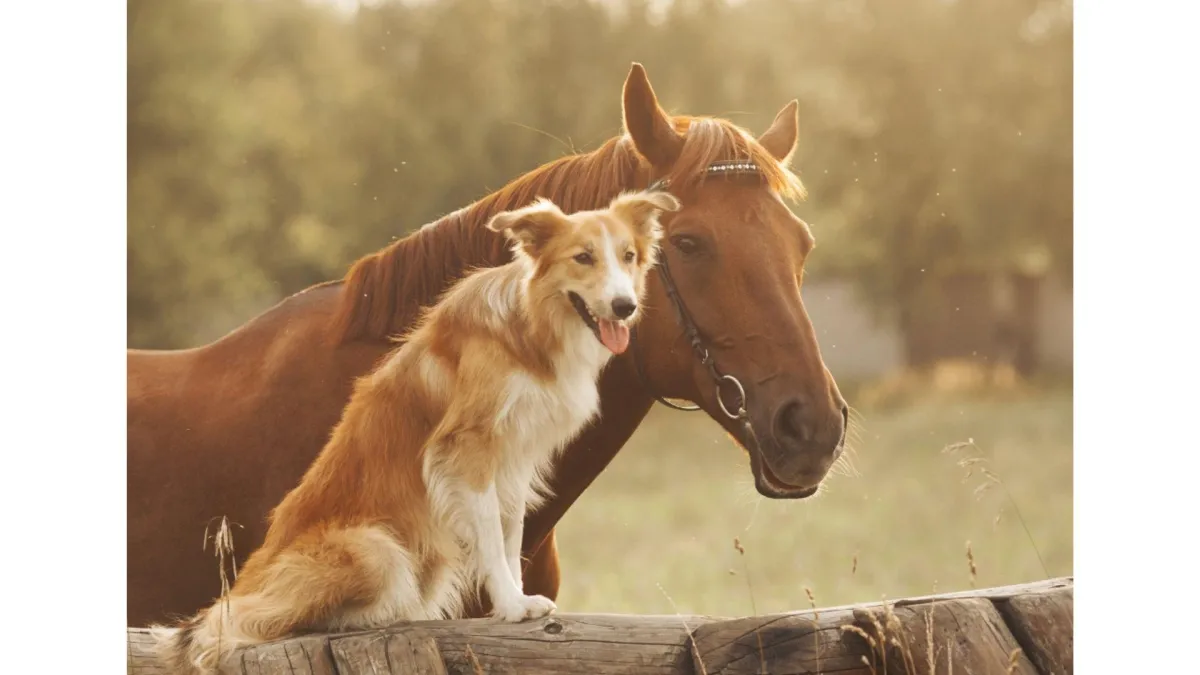
Doing a basic health check - horses and dogs
If one of your horses or dogs seems unwell, it’s a good idea to observe and examine them carefully before calling the vet. A clear description of the signs you’ve noticed will help with diagnosis and save time.
Start with quiet observation
Don’t rush in. Stand back for a few minutes and watch the animal carefully. Look for:
Changes in posture or movement
Limping or reluctance to move
Abnormal stance when urinating or defaecating
Excessive salivation or difficulty eating
Discharges, unusual odours, or swelling
Be aware that even normally gentle animals may behave unpredictably when they are in pain. Take care, and handle with caution.
Build experience on healthy animals
It’s worth practising your observation and handling skills on calm, healthy animals first. This will help you recognise what is normal, so you can spot the signs when something is wrong.
Only a veterinarian can make a proper diagnosis. Your role is to notice what has changed and pass that information on.
Key areas to check
Body condition and symmetry
Look along both sides of the animal for anything unusual. Run your hands gently over the body to check for swelling, heat, or pain responses. Feel the joints, check under the tail for signs of diarrhoea, and take note of any unusual smells (for example, bad breath or foot infections).
If you suspect lameness, ask the animal to walk forward and in a circle. Uneven gait or limping should be investigated further. For dogs, examine the paws and between the toes. For horses, check the hooves.
If you need help identifying and managing common hoof problems, our Feet and Foot Problems course covers all major species.
The cardinal signs: temperature, pulse, and respiration
These three measurements are useful indicators of general health, though they are affected by stress, pain, and handling.
Body temperature
Use a digital or mercury thermometer. Insert gently into the rectum (up to 2 cm for dogs, two-thirds of the length for horses), and hold in place until the reading is complete.
Normal rectal temperature:
Horse: 37.3 to 38°C
Dog: 38.6 to 40°C
High temperature may suggest fever, infection, or inflammation. Low temperature can indicate shock, cold exposure, or severe illness.
Pulse or heart rate
Use a stethoscope or your fingers to detect the heartbeat. In dogs, try the femoral artery inside the hind leg. In horses, use the facial artery along the lower jaw or listen directly to the chest wall.
Count beats for 15 seconds, then multiply by four.
Normal heart rate (beats per minute):
Horse: 28 to 40
Dog: 60 to 120
A fast pulse can result from fear, pain, or fever. A slow pulse may be normal in fit animals, or it could indicate sedation, poisoning, or shock.
Respiration rate
Count breaths by watching the chest rise and fall for 15 seconds, then multiply by four. If chest movement is hard to see, hold a tissue near the nose or nostrils to detect airflow.
Normal breathing rate (breaths per minute):
Horse: 8 to 16
Dog: 10 to 30
Watch for abnormal breathing behaviours such as:
Laboured or shallow breaths
Grunting, sneezing, or coughing
Extended neck or rigid posture
Abdominal effort or visible distress
Dogs can breathe through their mouths if needed. Horses cannot. Abdominal breathing in horses may indicate rib pain or chest inflammation.
Mucous membranes and hydration
Mucous membrane colour
Check the gums or the inside of the eyelid. Normal colour is pale pink or salmon.
Pale: possible anaemia
Blue: lack of oxygen (heart or lung problem)
Yellow: possible liver disease
Dark pink: may indicate toxins in the blood
Compare with a healthy animal if unsure.
Skin pinch test
To check for dehydration, gently pinch the skin on the neck or shoulder. It should flatten quickly. If the skin remains tented, dehydration is likely. The longer the delay, the more severe the dehydration.
Recognising pain in animals
Pain is difficult to measure directly. Some indicators can suggest discomfort, but they are not always specific.
Common signs of pain
Reluctance to eat or move
Dullness or unusual agitation
Groaning or grunting
Increased heart and breathing rates
Limping, stiffness, or guarding an area
Change in personality or behaviour
Restlessness or withdrawal
Pain signs in horses
Sweating
Teeth grinding
Looking at the flank
Kicking at belly or affected area
Rigid stance or low head
Absent gut sounds (in cases like colic)
Pain signs in dogs
Rigid abdomen or hunched back
Whimpering, growling, or snappiness
Attempting to lick or guard the painful area
Arched back, reluctance to lie down
When to call the vet
If you see any of the signs described above, especially if they are sudden or severe, contact your vet. Describe what you’ve observed in as much detail as possible.
For more foundational advice on livestock and companion animal care, consider our What You Need to Know to Keep Livestock course.

